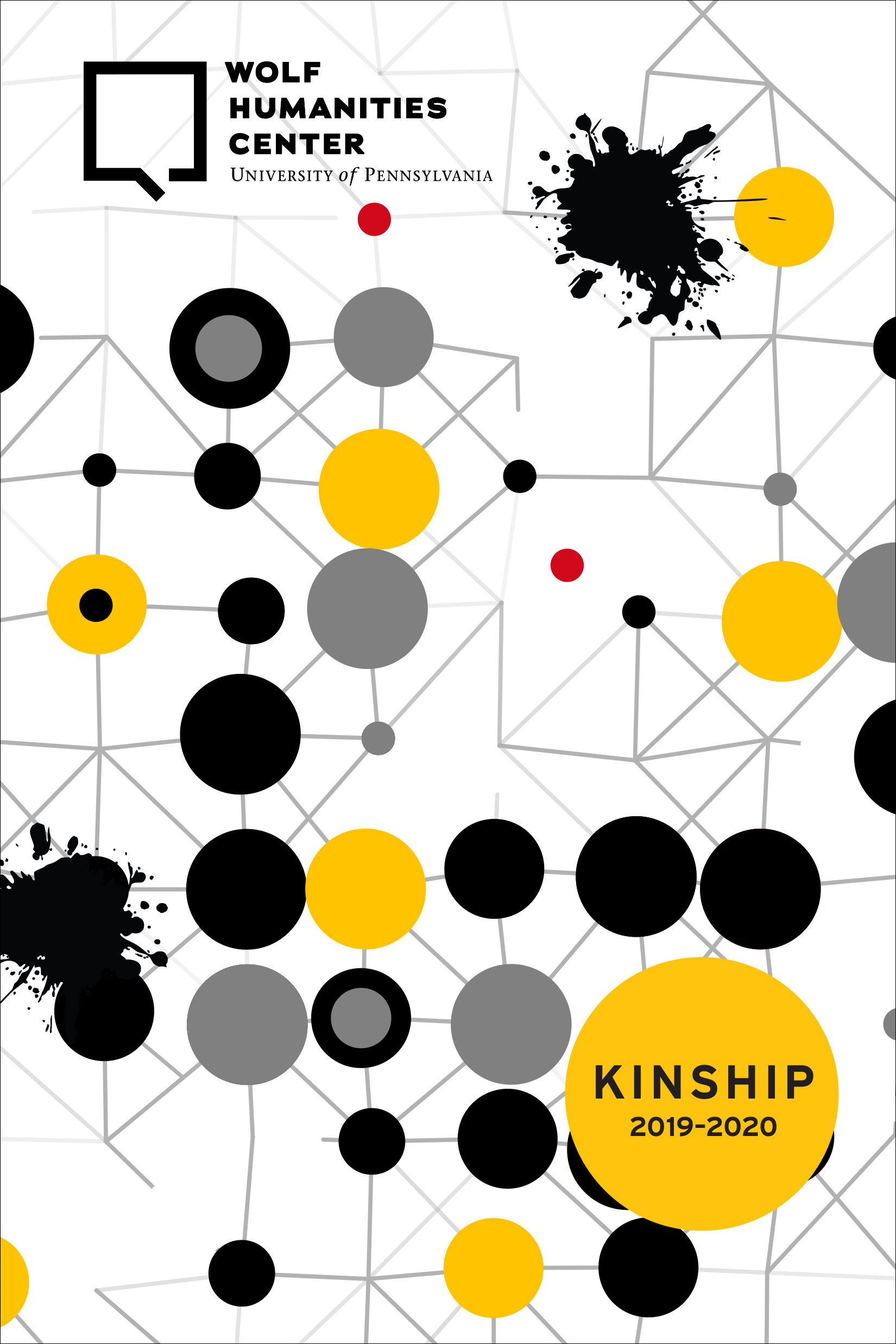Topic Director: Ramya Sreenivasan
Associate Professor of South Asian Studies
Kinship. Family. Lineage. Genealogy. These words organize some of our most significant relationships, at times functioning as roadblocks to modes of being that do not sit easily with these concepts. Organizing our affections, loyalties, and allegiances, they help to create boundaries between us and the world. We travel alongside, toward, or away from our kin — whether they be biological, adopted, intellectual, religious, or spiritual kin. Kinship thus describes an emotional as much as, or perhaps even more than, a social community.
Metaphors of kinship have long been used around the world to imagine bonds and obligations between individuals and communities, including bonds of ethnic or national solidarity, often given shape by the invocation of a single lineage, originating in a single ancestor. In its most common usage in English today, kinship refers to biological relationships organized in concentric circles of proximity. According to this logic, one’s parents are closer than one’s grandparents, grandparents closer than cousins, and so on. Concentric circles of proximity are also assumed to mirror circles of intimacy.
And yet intimacy has often disobeyed the dictates of proximity by blood. In fact, human culture has often been at its most powerful when exploring the disjunctions between proximity by kin or lineage, and intimacy. Contests for supremacy between kin have been described in early epics across the world, whether in Homer’s Iliad or in the Mahabharata in South Asia. The tribulations of conjugal relationships — whether marriage or long-term cohabitation — have formed the stuff of powerful fiction, poetry, and film in the twentieth and twenty-first centuries.
Anthropologists, historians, and scholars of religious traditions have all long been aware of other models for the organization of intimacy and proximity, and at times have hotly rejected kinship as a meaningless term. These scholars have also been aware of how such models differ from one place to another, as well as evolve over time. In many societies around the world, as in much of premodern Eurasia and Africa, kinship almost presupposed politically fraught relationships, whereas affection and intimacy were often considered to be the hallmark of relationships between enslaved people and masters. While kin could be rivals for resources, the loyalty of enslaved people was legally mandated. In such contexts, slaves could also rise to positions of great power, unlike in the plantation-based slavery of the early modern Atlantic world. And, such slaves could be and were often manumitted.
Monastic traditions around the world have long been organized around intense relationships of discipleship to a single teacher, and to a lineage of teachers. Whether among Sufis or Catholic monastic orders or among Buddhist monks, or among Nath renunciants in South Asia, the relationship with fellow disciples often explicitly supplants relationships presupposed by biological kinship. Intellectual lineages are more intangible, but often as intensely experienced. Artistic influence presents a powerful mode of organizing debts, affiliations (acknowledged or otherwise), and solidarities. The invocation of political solidarities imagined as an alternate mode of kinship is a powerful mobilizing tool in political resistance movements across the world. Some of these movements, however, also reject modes of solidarity founded on either the model of the family or presumptuous ally-ship, demanding the invention of new terms to describe modes of collectivity that resist kinship models.
In contemporary English usage, kinship as intimacy implicitly contrasts with politics, defined as the pursuit of individual and community interests. And yet, histories of regulating kinship have always involved defining and modifying the entitlements and privileges of members within a kin group. Some of the most intense political battles in the twentieth-century, post-colonial world were fought precisely over such regulation of the socio-economic and legal regimes of kinship.
Developments in medicine now mean that new biologically-based modes of kinship can be engineered— through surrogacy, for example. Meanwhile, increasingly regulated regimes of adoption offer specific constraints on the claiming or forgetting of kin. The foster care system illustrates that the temporality of kinship need not be fixed—while some relationship structures stretch into infinity, others are, by definition, provisional; fostering also serves as a useful catalyst for discussion of the economics of intimacy and care.
At a moment when, in many societies around the world, a more capacious imagining of community is being deliberately erased or forgotten, to be replaced by parochialisms and hatreds, the Wolf Humanities Center topic for 2019–20 calls for a reappraisal of the myriad possibilities for remembering, challenging, and reimagining kinship.
Ramya Sreenivasan, Topic Director
Karen Redrobe, Director, Wolf Humanities Center
May 2018



